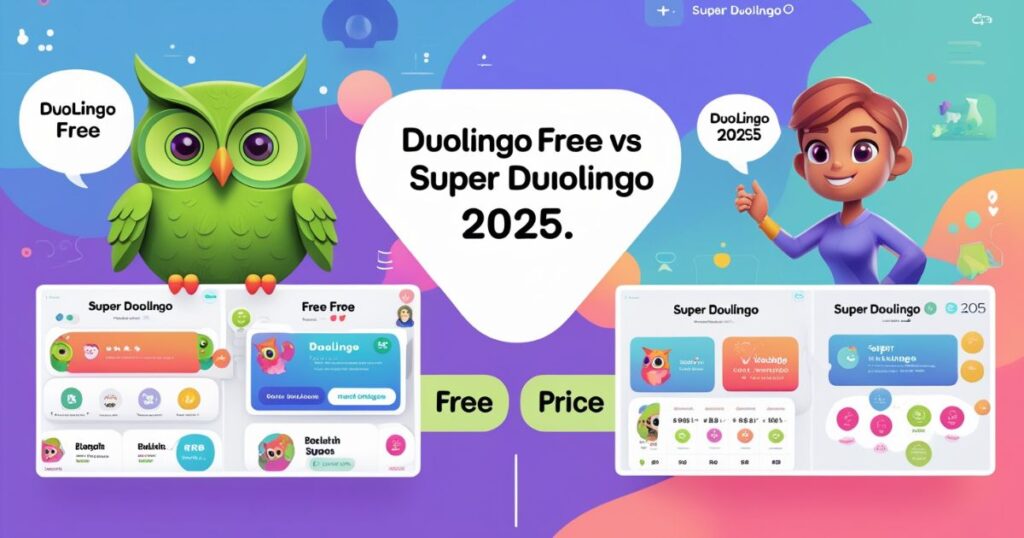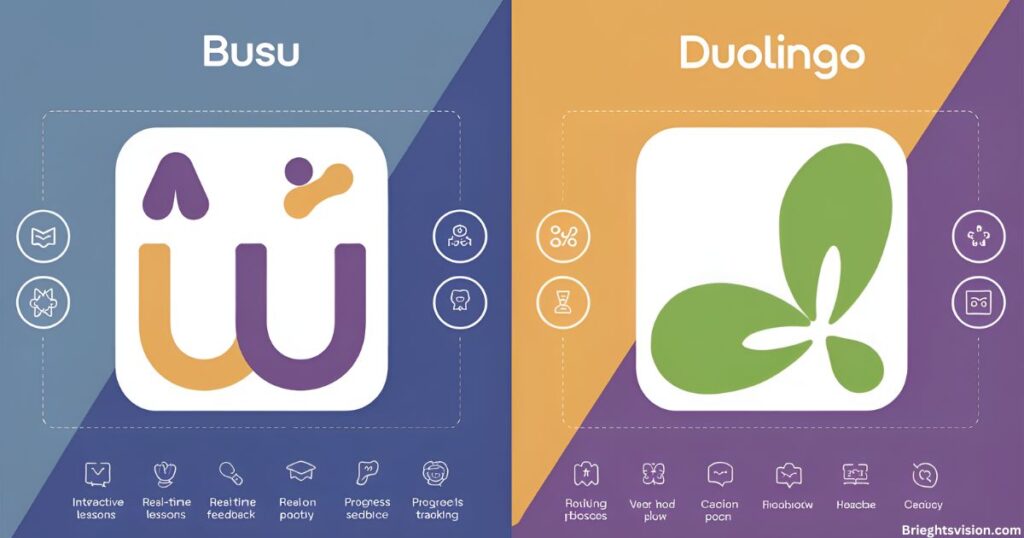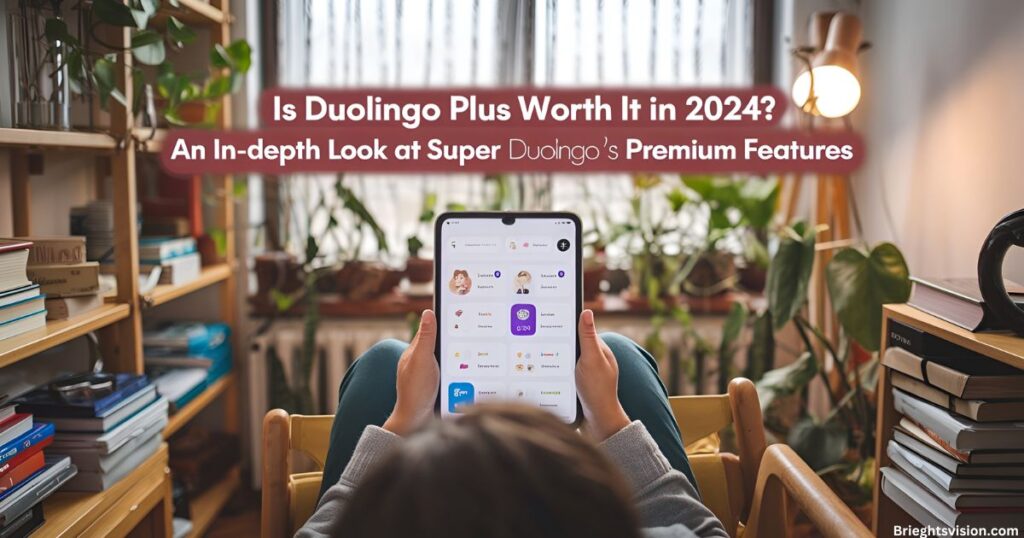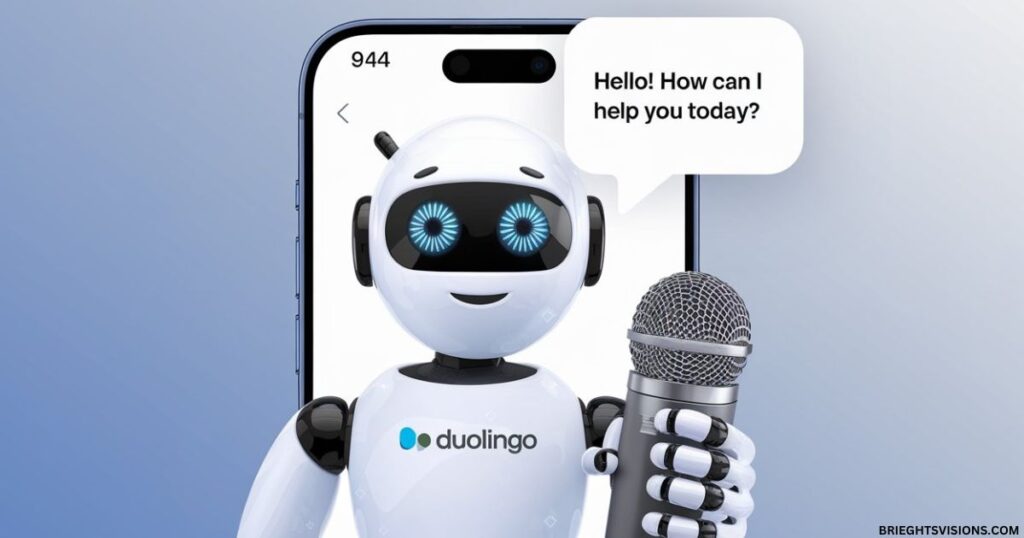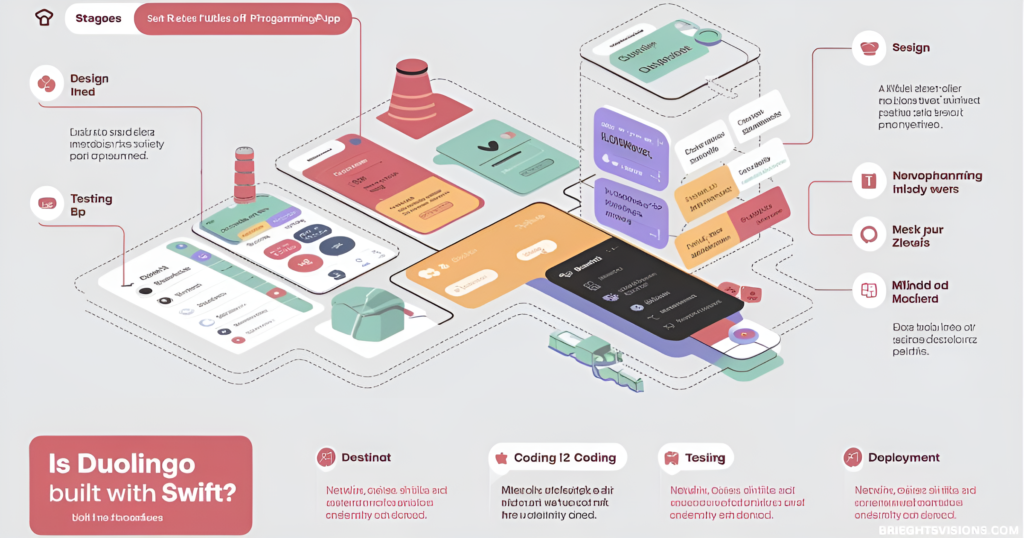The digital education landscape has been dramatically reshaped by innovative platforms like Duolingo. With millions of global users, this mobile learning application has transformed how individuals acquire new languages.
Leveraging sophisticated algorithms and gamified learning experiences, Duolingo language learning offers an engaging approach to language acquisition. By breaking down complex linguistic barriers, the platform provides personalized learning paths that adapt to individual progress.
From Spanish to Mandarin, learners can now access comprehensive language training through bite-sized, interactive lessons that make mastering a new tongue more accessible and enjoyable than ever before. This comprehensive guide delves deep into Duolingo’s methodology, examining its impact on language acquisition and exploring how it fits into the broader spectrum of Duolingo language learning tools.
Understanding Duolingo’s Core Learning System
Understanding Duolingo Language Learning revolutionizes linguistic acquisition through innovative digital strategies. Founded by Luis von Ahn in 2011, the platform blends gamification with cognitive science principles to create an immersive educational experience.
The system employs advanced algorithms that personalize learning paths, adapting to individual user performance and comprehension levels. Interactive exercises engage multiple learning modalities, incorporating visual, auditory, and written components to maximize retention.
Sophisticated speech recognition technology evaluates pronunciation, while adaptive difficulty levels ensure continuous challenge and motivation. By transforming language learning into an engaging, accessible digital journey, Duolingo Language Learning has democratized educational resources for millions of global learners seeking to master new linguistic skills.
Unveiling Research-Backed Performance Metrics
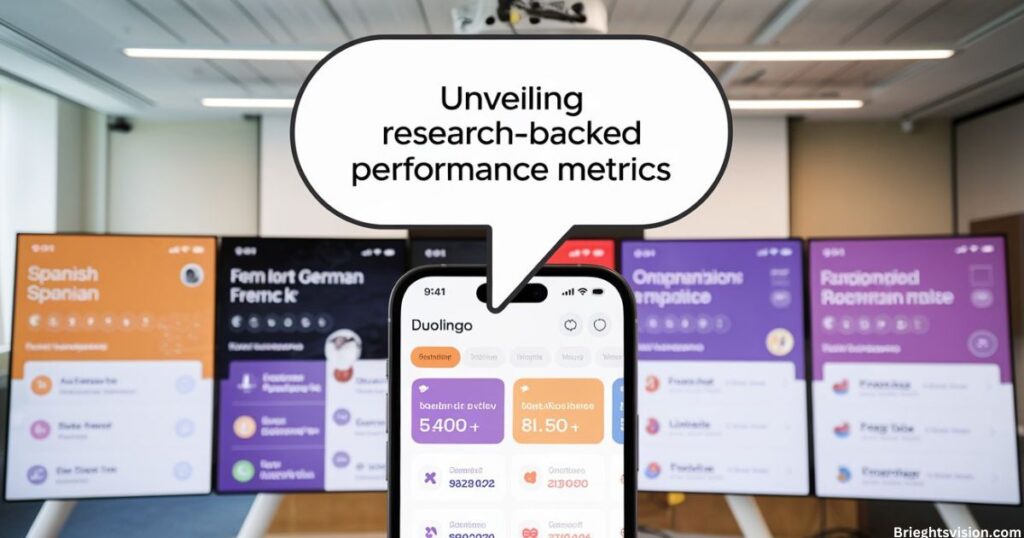
Duolingo Language Learning represents a ground-breaking approach to linguistic education, supported by rigorous scientific investigation. Independent research from the University of South Carolina in 2019 revealed remarkable findings about digital language acquisition.
The comprehensive study demonstrated that 34 hours of Duolingo instruction could effectively replace a full university semester of language learning. Researchers analysed performance metrics across multiple language pairs, highlighting the platform’s innovative pedagogical design. The platform’s algorithmic approach ensures personalized learning experiences, adapting to individual user progress and comprehension levels.
Moreover, statistical evidence suggests significant improvements in vocabulary retention and grammatical understanding, particularly for learners of Spanish, French, and German languages. These empirical investigations validate Duolingo’s potential as a transformative educational technology.
Navigating Language Mastery through Digital Platforms
Duolingo Language Learning provides a nuanced pathway to linguistic proficiency, offering learners structured yet flexible educational experiences. Users typically achieve A1 to A2 level competency within 3-6 months of dedicated practice.
The platform’s sophisticated algorithm tracks individual progress, identifying strengths and potential improvement areas. Success stories like Sarah Thompson from the United States illustrate how consistent engagement can translate into practical language skills. Empirical data suggests that learners who dedicate 15-30 minutes daily demonstrate more substantial comprehension improvements.
While speaking fluency requires supplementary conversation practice, Duolingo effectively builds foundational reading and listening capabilities. The platform’s gamified approach maintains learner motivation, making language acquisition feel less like traditional study and more like an interactive challenge.
Exploring Duolingo’s Technological Arsenal
Duolingo Language Learning distinguishes itself through an innovative suite of educational tools. The Stories feature provides immersive narrative content, enhancing contextual language understanding. Duolingo Podcasts offer authentic listening experiences, bridging theoretical learning and real-world communication.
The crown system introduces progressive difficulty levels, ensuring mastery before advancement. Premium Duolingo Plus features include offline access, detailed mistake reviews, and comprehensive mastery quizzes. Engagement mechanisms like streaks, competitive leagues, and achievement tracking transform language learning from a mundane task into an exciting daily adventure.
The platform’s adaptive technology personalizes learning paths, catering to diverse linguistic backgrounds and learning preferences. By integrating gamification with sophisticated linguistic algorithms, Duolingo creates an engaging, effective language learning ecosystem.
Reimagining Language Acquisition in the Digital Age

Duolingo Language Learning emerges as a revolutionary alternative to conventional language education methodologies. Unlike traditional classroom settings, the platform offers unparalleled accessibility and consistent learning opportunities. Cost-effectiveness becomes immediately apparent when compared to private tutoring, which can exceed $50 per hour.
While language immersion remains the ultimate fluency development strategy, Duolingo provides an innovative, technology-driven practice environment. The platform’s adaptive learning technology creates personalized educational journeys impossible with standard textbooks.
Researchers from Stanford University and MIT have acknowledged the platform’s potential in democratizing language education. However, experts recommend complementing Duolingo with conversation practice and cultural immersion for comprehensive linguistic development. The future of language learning increasingly depends on such intelligent, user-centric digital platforms.
Mastering Digital Language Learning Skills
Maximizing potential in Duolingo Language Learning requires strategic, multifaceted approaches to digital linguistic development. The shadowing technique emerges as a powerful method, enabling learners to improve pronunciation through immediate phrase repetition.
Successful users recommend creating a structured daily routine, dedicating 15-30 minutes to consistent practice. Dr. Elena Rodriguez, a language acquisition expert, suggests combining platform lessons with external resources like Duolingo Events and language exchange networks.
Gamification features such as streaks and leagues provide critical motivation, transforming learning from a chore to an engaging challenge. Advanced practitioners recommend supplementing core lessons with immersive content like native media, podcasts, and authentic conversations. The key lies in maintaining enthusiasm, setting realistic goals, and embracing a holistic approach to language acquisition.
Exploring Global Language Course Landscape
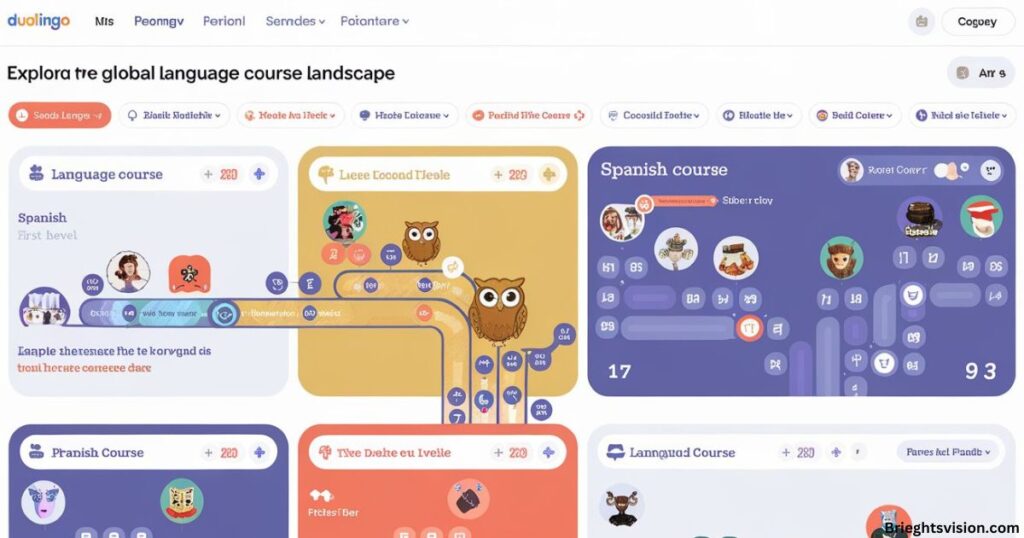
Duolingo Language Learning presents a diverse linguistic landscape with varying course depths and pedagogical approaches. The platform demonstrates exceptional strength in major languages like Spanish, French, German, and Italian, offering comprehensive curricula that address complex grammatical structures and extensive vocabularies.
Asian language courses for Japanese, Chinese, and Korean employ innovative strategies to tackle unique writing systems and tonal complexities. Interestingly, less common languages such as Irish, Welsh, and Hawaiian provide crucial cultural heritage learning opportunities. Course quality directly correlates with user base size, with popular languages receiving more frequent updates and refined content.
Linguistic researchers from Stanford University have noted the platform’s adaptive algorithm, which continuously refines learning paths based on user performance and global linguistic trends.
Revolutionizing Future Learning Technologies
The evolutionary trajectory of Duolingo Language Learning promises ground-breaking technological integration and enhanced educational experiences. Artificial intelligence advancements are set to revolutionize personalization, offering increasingly sophisticated feedback mechanisms.
Researchers at MIT predict the incorporation of augmented reality technologies will create more immersive learning environments. The platform is developing features that emphasize cultural context and real-world language application, bridging the gap between digital instruction and practical communication skills.
Linguistic innovation experts anticipate expanded course offerings, including endangered and indigenous languages. Enhanced speech recognition technology will provide more nuanced pronunciation feedback. By 2025, Duolingo aims to integrate machine learning algorithms that can dynamically adapt to individual learning styles, creating a truly personalized language education ecosystem.
Duolingo Language Learning
Successful Strategies: Stories of Impact
The Duolingo Language Learning platform empowers individuals like Mark from Canada and Emily from the United Kingdom to transform their linguistic journeys. These inspiring narratives showcase how strategic engagement with technology can revolutionize language acquisition.
Successful learners typically invest 15-30 minutes daily, creating a consistent routine that integrates digital practice with real-world exposure. The platform’s adaptive algorithms enable users to progress systematically, breaking down complex language barriers.
By combining structured lessons with immersive experiences, Duolingo provides a comprehensive approach to mastering new languages. Learners strategically supplement their digital training with media consumption, conversation practice, and clear goal setting, ensuring a holistic and effective language learning experience that transcends traditional educational methodologies.
Advanced Techniques in Digital Language Acquisition
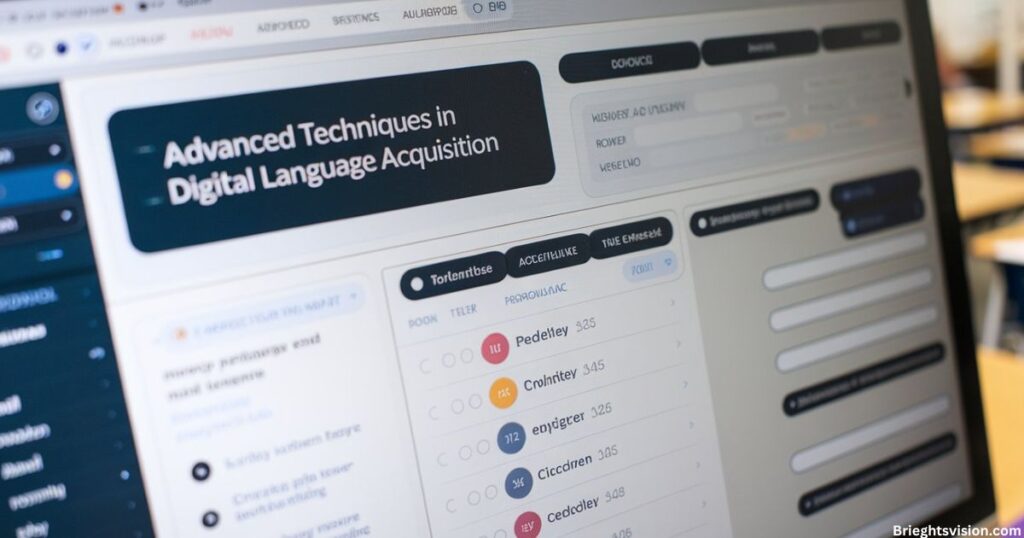
Duolingo Language Learning represents a sophisticated approach to comprehensive linguistic development, offering strategic pathways for dedicated learners. Advanced users can maximize their learning potential by integrating the platform’s structured curriculum with diverse external resources.
Professor Maria Rodriguez from the University of California recommends creating a holistic learning ecosystem that extends beyond digital platforms. The Duolingo algorithm provides an exceptional foundation, but real mastery emerges through multifaceted engagement strategies. Learners can supplement platform-based learning by exploring native films, engaging with language exchange partners, and consuming authentic cultural content.
The spaced repetition system becomes most effective when combined with immersive experiences in Spanish, French, and Mandarin contexts. By adopting a flexible, technology-enhanced approach, language enthusiasts can transform Duolingo Language Learning into a powerful linguistic transformation tool.
Transforming Language Education Paradigms
Duolingo Language Learning represents a paradigm shift in linguistic education, challenging traditional methodological boundaries. Comparative analyses reveal significant advantages over conventional classroom-based instruction, particularly in accessibility and personalized learning paths.
Educational technology experts from Harvard University highlight the platform’s cost-effectiveness, estimating savings of up to 70% compared to traditional language courses. While immersion remains the gold standard for fluency, Duolingo provides an unprecedented opportunity for consistent, structured practice.
The platform’s adaptive technology outperforms static textbook methods, offering real-time feedback and personalized learning trajectories. Dr. Michael Chen, a prominent language acquisition researcher, suggests that digital platforms like Duolingo democratize language learning, making linguistic education more accessible to global populations.
Comparative Analysis
In the evolving landscape of Digital Language Learning, Duolingo revolutionizes traditional educational methodologies. Compared to conventional classroom approaches, this platform offers unprecedented accessibility and personalization. Founded by Luis von Ahn in 2011, Duolingo leverages advanced AI and gamification techniques to create engaging learning experiences.
Key differentiators include:
- Real-time adaptive learning algorithms
- 24/7 accessible educational resources
- Personalized progress tracking
- Cost-effective alternative to traditional courses
Research from Stanford University and MIT validates the effectiveness of Digital Language Learning platforms. By breaking geographical and economic barriers, Duolingo democratizes language acquisition, making comprehensive linguistic education available to millions globally through innovative technological integration. The future of language learning is decidedly digital, personalized, and incredibly accessible.
Frequently Asked Question
What are the changes to Duolingo in 2024?
Duolingo introduces AI-powered personalization, enhanced speaking practice, and more culturally contextualized language learning experiences.
Can you actually become fluent with Duolingo?
Duolingo provides foundational skills, but achieving fluency requires additional immersion, conversation practice, and real-world language exposure.
Does Duolingo really work for learning languages?
Duolingo effectively builds basic language skills through gamified learning, but works best when supplemented with comprehensive language resources.
What algorithm does Duolingo use?
Duolingo employs adaptive learning algorithms that personalize content difficulty based on individual user performance and progress.
Is Duolingo better than Rosetta Stone for language learning?
Duolingo is free, more interactive, and gamified, while Rosetta Stone offers more structured, comprehensive professional language training.
How much does Duolingo Plus cost, and is it worth it?
Duolingo Plus ranges from $6.99-$12.99 monthly, offering ad-free learning, offline access, and unlimited mistake reviews.
Can kids use Duolingo to learn languages effectively?
Duolingo Kids provides age-appropriate, engaging language lessons with colorful interfaces, making learning fun and accessible for children.
What languages are most popular on Duolingo in the USA?
Spanish, French, German, Japanese, and Chinese consistently top the list of most-learned languages on Duolingo.
How long does it take to learn a language on Duolingo?
Learning speed varies, but consistent daily practice can help achieve basic conversational skills in 3-6 months.
Does Duolingo offer certification or language proficiency tests?
Duolingo English Test is recognized by many universities, providing an affordable, convenient alternative to traditional language proficiency exams.
Conclusion
Duolingo Language Learning emerges as a transformative platform for language acquisition, offering an accessible and engaging approach to mastering new languages. Its innovative gamification techniques and structured curriculum provide learners with a solid foundation in vocabulary, grammar, and basic comprehension. While not a complete solution for fluency, Duolingo excels at establishing consistent learning habits and motivating users through interactive challenges.
The key to success lies in viewing Duolingo as a strategic component of a comprehensive language learning journey. By combining the platform’s digital resources with real-world practice, immersion, and additional learning methods, users can create a holistic approach to language development. Ultimately, Duolingo Language Learning empowers individuals to break down linguistic barriers with confidence and creativity.
Visit For More Blog’s: brieghtsvision.com

Welcome to Brieghtsvision.Com!
Your one-stop place for tips and guides to get the most out of Duolingo. Make learning a new language easier with helpful content for learners of all levels.

